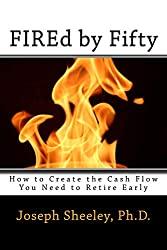
We’ve had a great bull market, but all good things must come to an end. You’ve probably got a pretty sizeable gain in your stocks and mutual funds, so maybe around now you’re thinking that we may be due for a fall and you don’t want to see those gains evaporate. But how do you protect yourself from falling markets? How do you keep the bear at bay? Today we’ll talk about some strategies to protect your portfolio.
(Note, this site contains affiliate links. As an Amazon Associate I earn from qualifying purchases. When you click on an affiliate link and buy something, The Small Investor will get a small commission for the referral. You are charged nothing extra for the purchase. This helps keep The Small Investor going and free. I don’t recommend any products I do not fully support. If you would like to help but don’t see anything you need, feel free to visit Amazon through this link and buy whatever you wish. The Small Investor will get a small commission when you do, again at no cost to you.)

1) Selling short
The first strategy used for protection is to sell short. In selling short, you borrow shares and sell them, planning to pick them up later at a lower price. you can learn more about the strategy here. If you’re trying to protect specific stock positions, you can short companies in the same industry or other industries that one would expect to fall along with the industry in which you are long (hold stock positions).

(If you enjoy The Small Investor and want to support the cause, or you just want to learn how to become financially independent, please consider picking up a copy of my new book, FIREd by Fifty: How to Create the Cash Flow You Need to Retire Early This is the instruction manual on how to become financially independent.)
2. Buying put options
Put options were designed to be little insurance contracts to protect investors from losses. In exchange for a small premium, you can buy a contract that will allow you to sell the shares for a certain price regardless of where the stock is trading. These contracts expire within a few months, however, and it will cost you about 25% of the value of the shares to keep contracts in place throughout a year, so this isn’t something you’ll want to do long-term. To find out more about buying put options, go to this article.
3. Selling covered call options
Calls are just the opposite of puts, where you agree to sell your shares to someone else for a certain price before a certain date. Selling covered calls won’t provide total protection like selling short or buying put options, but because you’re collecting a premium each time you sell a call, it will take a little of the sting off a drop in the price. Just as with buying puts, if you continue to sell covered calls for a year, you can collect about 20-25% of the value of the stock position. You can learn more about writing covered calls here.

Want all the details on using Investing to grow financially Independent? Try The SmallIvy Book of Investing
While each of these strategies will provide a hedge, each also has its downfalls. Because stocks can continue to go up for some time even when the market is due or past due for a fall, one may need to cover short positions before the market does finally does capitulate. Things can also happen to individual stocks such as buyouts that cause the shares of your short sale to rocket up, forcing you to cover the position.
Put options expire, and you may end up buying put option after put option, only to see them expire worthless. Then the day that you forget to but a new put is the day the market will fall 10%.
Writing covered calls is a conservative strategy, but what do you do when the stock has fallen by 10%? Do you buy an offsetting call to close out your original position, where the call was written at a much higher strike price, and then write a new call at the lower price? What if the stock then goes up? Do you close out the position, taking a loss, and then write another call, hoping the stock goes down again? Also, what if the stock goes up 10% after you write the first call? Do you close out the position and take a loss on the call you wrote, risking that the stock would then fall?

Perhaps the best strategy for hedging, and the only one suitable for serious investors who are investing to make a great deal of money rather than gain some entertainment, is to simply sell off portions of a position once it becomes large enough to worry about losses. If a position seems particularly pricey, in that it would take several years for earnings to justify the current price, it is best to close out the position. If it looks like the entire market is about to fall, it is probably best to close out some of the positions that have done really well, or at least take some money off of the table, and start pooling up resources to buy after the fall.
One must be careful, however, in that most of the returns of the stock market are due to a few day’s worth of gains. If one is constantly diving into and out of the market, one may miss one of those days, which could mean the difference between making a 15-20% annualized return and 5% return.
Have a burning investing question you’d like answered? Please send to [email protected] or leave in a comment.
Disclaimer: This blog is not meant to give financial planning or tax advice. It gives general information on investment strategy, picking stocks, and generally managing money to build wealth. It is not a solicitation to buy or sell stocks or any security. Financial planning advice should be sought from a certified financial planner, which the author is not. Tax advice should be sought from a CPA. All investments involve risk and the reader as urged to consider risks carefully and seek the advice of experts if needed before investing.
